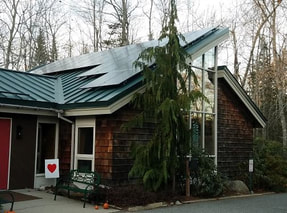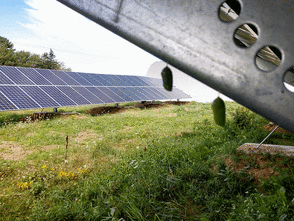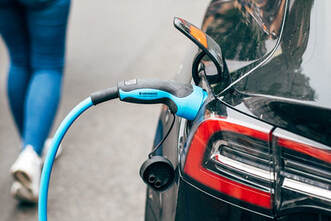 By Sarah Lozanova, Solar Energy Writer Many homeowners want to install a solar electric system but don’t know if their roof gets enough sunshine. The return on investment from the solar panels and the positive environmental benefits are highly dependent on the energy production. Here’s the essential information to determine if a house has ample solar potential. Roof Orientation Solar energy systems generate the most electricity when the panels are pointed south. If the orientation of the roof is slightly off from due south, it won’t have a dramatic impact on the total energy production. If the solar panels face east, they will generate more energy in the morning. Conversely, if the panels face west, the system will have excellent afternoon production but little in the morning. It is not recommended to install panels on a north-facing roof (in the northern hemisphere).  By Sarah Lozanova, Solar Energy Writer A big concern with large-scale solar farms is the impact on land use. Solar developers often site projects on agricultural land that is taken out of production. Also, the vegetation around solar panels needs to be maintained to prevent shading. In some cases, herbicides are used, contaminating waterways, and mowing generates pollution. If the developer applies gravel or plants turfgrass, the land has little wildlife value. As the local food movement gains steam, isn’t it counterproductive to turn productive cropland into an energy plant? How can the solar energy industry embrace biodiversity while producing clean energy? Is dual use of a solar site possible? Solar farms can be managed to increase pollinator habitat, improve soil quality, and even for livestock grazing. Innovative land management approaches enable solar projects to serve multiple purposes, benefitting the local economy. Keeping honeybees, grazing sheep, and even cultivating mushrooms can all complement a solar energy project. Native Wildflowers Boost Pollinator Habitat Researchers with the Argonne National Laboratory are examining the economic benefits of establishing native vegetation, including wildflowers and prairie grasses, on nearby cropland. Native vegetation attracts crucial critters like bees, flies, bats, birds, wasps, moths, and butterflies, which can be beneficial to crop yields. Researchers with the Argonne National Laboratory are examining the economic benefits of establishing native vegetation on nearby cropland, including wildflowers and prairie grasses. A diverse array of native plants benefits wildlife diversity, especially pollinators. These crucial critters include bees, flies, bats, birds, wasps, moths, and butterflies, and can be beneficial to crop yields. Read More... Image Credit: Danny Piper of Sundog Solar  By Sarah Lozanova, Clean Energy Writer If you don’t already own an electric vehicle (EV), you might soon. Most automakers are ramping up the development and production of electrified models, including SUVs and pick-up trucks. EV ownership is predicted to skyrocket in the next few years. Because these vehicles need to charge, it is important to figure out the best approach. When considering an EV purchase, it is wise to consider how you will charge it. The length of time it takes to charge depends on the battery capacity and the speed of the charger. It takes longer to charge a car with a larger or more discharged battery — or from a slower charging device. The way that many EV owners charge their vehicles is similar to how they charged their cell phones before quick chargers became widespread. They give the EV a full charge overnight and top it off as needed throughout the day. Ideally, owners can charge their electric vehicle at home in a garage or driveway. This is typically the most convenient, especially when using slower units. Let’s explore the different types of chargers available. Level 1 Chargers These devices work from a standard 120-volt wall outlet and all EVs come with a standard home connector kit. However, Level 1 chargers require more time to charge the vehicle than higher-volt alternatives. Many EV drivers use this option if they are not in a hurry to charge because it doesn’t require an investment in additional equipment or electrical upgrades. It can also be convenient on the road because it requires no more than a standard electrical outlet. Level 2 Chargers For faster home charging than the standard wall units, some EV owners upgrade to Level 2 chargers. These units run off of 240-volt currents, allowing the vehicle to charge in several hours. From an electrical perspective, the chargers require the same voltage as many electric ranges, dryers, and water heaters. Read More... Image Credit: Ivan Radic |